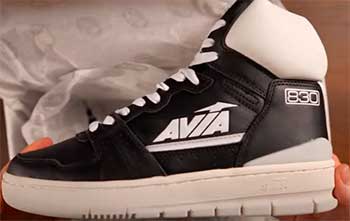Avia has made a name for itself as an affordable athletic shoe brand compared to more premium options from companies like Nike or Adidas. But how does Avia manage to keep its prices so low without compromising on quality and performance?
There are several strategic factors that allow the company to offer bargain prices for gym-goers and casual runners.
Reasons For Avia Shoes So Cheap
Here is a list of those reasons:
- Cost-Effective Materials and Production
- Direct Distribution Model
- Targeting Casual Athletes
- Simple and Proven Shoe Designs
- Minimal Brand Marketing
- High Sales Volume Makes Up for Low Margins
- Consumer Psychology Behind Low Prices
- Investment in Automated Production
- Strategic Partnerships With Major Retailers
- Lean Internal Operations
Let’s talk about these reasons in detail.
- Cost-Effective Materials and Production

One of the main reasons Avia shoes come with budget-friendly price tags is the materials used in manufacturing the shoes. Rather than premium leather uppers, Avia relies on synthetic leather, mesh fabric, and TPU which bring costs way down.
These animal-free vegan materials deliver the same durability and breathability at a fraction of the price.
The outsoles of Avia shoes also use ordinary rubber instead of high-performance carbon rubber. While carbon rubber offers better traction and lifespan for competitive athletes, standard rubber provides enough grip and cushioning for the average gym or training session.
Substituting cheaper outsole materials reduces costs substantially over the lifespan of the shoe.
In addition to cheaper uppers and outsoles, Avia keeps production costs down through high-volume overseas manufacturing. The vast majority of Avia shoes are produced in factories in China, Indonesia, and Vietnam where labor costs are far lower than in the U.S. or Western Europe.
Locating manufacturing in these regions with lower wages and operating expenses allows Avia to spend less per shoe produced.
Automated production lines also maximize efficiency and lower per unit costs. Combined with cheaper materials, high-volume overseas factories enable Avia to minimize production expenses passed onto the customer.
While critics take issue with overseas labor practices, the reality is most athletic shoe brands rely on outsourced manufacturing to keep prices competitive. Avia is no different.
- Direct Distribution Model
On top of efficient manufacturing, Avia also uses a direct-to-consumer distribution model instead of relying on third-party retailers like Dick’s Sporting Goods or Foot Locker. Avia primarily sells shoes through its own website, factory outlet stores, and major online retailers like Amazon.
This direct distribution approach avoids the price markups necessary when routing products through traditional sales channels. Retail stores have to account for their own overhead, employees, marketing, and profit margins when setting shoe prices for customers.
By controlling distribution directly, Avia can offer much lower pricing closer to wholesale production costs. Cutting out the retailer middleman translates to major savings for the end customer. Direct sales channels also foster stronger customer engagement and brand loyalty.
- Targeting Casual Athletes
Another strategic decision keeping Avia shoes inexpensive is the company’s targeting of recreational and casual athletes rather than professional competitors.
Avia positions itself firmly as an entry-level athletic shoe at a starter price point for the everyday gym or fitness enthusiast. Their shoes cater to the budget-conscious mainstream market.
The company does not try to compete with premium performance brands designed for competitive athletes. This allows Avia to strip away expensive specialized features and materials aimed at elite sports, instead providing quality essentials accessible to the average active consumer.
Lower prices entice beginners and casual runners looking for affordable quality. By carving out an entry-level niche rather than chasing the high-end market, Avia can deliver exceptional value at prices ordinary athletes can afford.
- Simple and Proven Shoe Designs

In addition to affordable materials and distribution, Avia is able to offer bargain prices by sticking with simple, proven shoe designs rather than pushing innovation. The company puts minimal resources into research and development or reinventing shoe technology each season.
Rather than experimental features or customization for individual foot types and running styles, Avia focuses on straightforward designs that get the job done. The no-frills approach provides the essential cushioning, stability and breathability the average gym-goer needs without cutting-edge performance upgrades or customization.
By foregoing major tech innovations, Avia avoids inflated costs from R&D experimentation and can instead allocate funds into efficient manufacturing. The simplicity of designs based on proven technologies keeps prices reasonable for the casual athlete that doesn’t require the latest innovations.
Also Read: This Is Why Bruno Mac Shoes Are So Inexpensive.
- Minimal Brand Marketing
Unlike major brands that spend countless millions on celebrity sponsorships and splashy marketing campaigns, Avia operates on a relatively small advertising budget. The company puts little money into attempts at luxury branding or flashy promotions.
This lean marketing approach means Avia doesn’t have to bake hefty advertising costs into the retail pricing of its shoes. The company can instead pour resources directly into manufacturing quality products at the lowest viable price point.
With less reliance on expensive ads and brand ambassadors, Avia reduces overhead substantially compared to behemoths like Nike and Adidas. Strong word-of-mouth and customer satisfaction build natural buzz for the budget-friendly brand.
- High Sales Volume Makes Up for Low Margins
One key factor that makes Avia’s bargain pricing profitable and sustainable is the high sales volume. While profit margin per shoe is lower than premium brands, overall revenue remains substantial thanks to Avia’s success targeting the mass-market consumer.
Where high-end companies like Brooks or Saucony may only sell thousands of a particular shoe model, Avia can sell hundreds of thousands thanks to pent-up demand for quality at an affordable price. Their core consumer base of value-focused athletes drives sales numbers up despite low retail costs.
Even with tight margins, the staggering sales volume multiplies overall profits on cheaper materials and manufacturing. By keeping prices low, Avia also converts price-sensitive shoppers who may not have purchased premium-priced shoes. The budget pricing fuels market share gains.
- Consumer Psychology Behind Low Prices
Setting shoe prices low isn’t just about offsetting expenses—it’s also a psychological tactic. Low sticker prices get customers in the door and drive impulse purchases from bargain hunters. The inexpensive tag makes shoppers feel like they’re getting a steal.
Even if profit margins are relatively low, the surge of interest and purchases more than compensates. Customers feel like scoring a great deal leads to higher satisfaction and loyalty. For the brand, it creates positive word-of-mouth and repeat business even on cheap shoes.
Affordable pricing also sets expectations for quality appropriately. Customers don’t anticipate cutting-edge performance tech or luxury materials at such low costs. When the shoes deliver on comfort, traction, and support at bargain prices, it feels like an amazing value.
Also Read: Here Is Why Price of Pikolinos Shoes So Expensive.
- Investment in Automated Production
To enable low manufacturing expenses, Avia has made significant investments in automating production processes using advanced machinery and molds. While expensive up front, automation increases efficiency and drives down per unit costs substantially over time compared to lower-tech production.
With automation, the incremental expense of producing an additional pair of shoes is minimized. Machines also don’t require wages, benefits, or days off. Automated methods allow output to scale affordably to meet market demand.
Given Avia’s high sales volumes, investing in automation provides major long-term payoffs. The sophisticated equipment effectively pays for itself over time in lower labor, waste, and overhead costs. Driving efficiency through technology is key for lean but profitable manufacturing.
- Strategic Partnerships With Major Retailers

Avia maintains key retail partnerships that expand reach while minimizing marketing costs.
Being featured by massive online outlets like Amazon and Zappos provides incredible exposure to potential new customers seeking budget-friendly athletic shoes.
These major retailers also incentivize customers to enroll in membership programs with discounted pricing on value brands like Avia. Deals and exclusives structured around memberships help build durable sales channels.
The partnerships enable Avia to capitalize on the marketing and infrastructure of powerhouse retailers. Without the challenges and expenses of building an ecommerce operation from scratch, Avia relies on trusted platforms consumers already love.
- Lean Internal Operations
In order to pour resources into high-value manufacturing rather than overhead, Avia keeps operations lean and efficient. The company minimizes non-essential expenses across internal departments.
There is little excess spending or bureaucracy bogging down the path to designing, producing, marketing, and selling affordable athletic shoes.
Avia focuses investment on core business activities like product R&D, supply chain management, and customer interaction. Administrative bloat is seen as diverting funds away from the efficient operations necessary to keep shoe costs low for the end customer.
The lean operating model aligns actions to that consumer-centric goal.
Also Read: Here Is Why Price of Golden Goose Shoes So Expensive.
Frequently Asked Questions (FAQ)
Avia is considered a good quality brand for casual athletic shoes. While not top-tier for competitive athletes, Avia delivers reliable performance for everyday gym use and runs at an affordable price point. The shoes are reasonably durable and comfortable thanks to quality manufacturing.
Avia athletic footwear is produced by the Avia brand under the company American Sporting Goods. It is a subsidiary brand of Sequential Brands Group, which owns and licenses several affordable shoe companies.
Some famous NBA players wore Avia shoes early in their careers when starting out, including NBA legends Scottie Pippen and Reggie Miller. The affordable shoes with good court traction gained some traction in basketball in the late 80s and early 90s among players on a budget.
Many Avia shoe styles are designed with good arch support for athletic performance and injury prevention. Features like a molded EVA midsole, padded foam sockliner, and stability heel counter provide comfortable arch support for different foot types. However, options vary across the different shoe models.
Wrapping Up
With a strategic mix of material sourcing, production practices, distribution models, brand positioning, and operational efficiency, Avia manages to offer athletic footwear at impressively low price points.
While quality and performance may not rival premium brands targeting competitive athletes, the shoes deliver exactly what the everyday active consumer needs.
For gym-goers, new runners, and casual fitness enthusiasts on a budget, Avia combines vital performance features with bargain pricing. By aligning its business operations around reducing costs rather than maximizing margins, Avia makes quality shoes accessible to the mass consumer.
Considering the strategic factors that enable low prices gives customers confidence they are getting an excellent value, not just a cheap product. Next time you’re shoe shopping, consider if Avia’s budget-friendly options have the right features and support for your active lifestyle.



